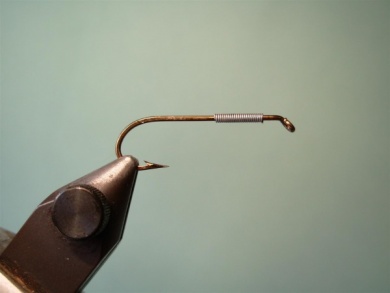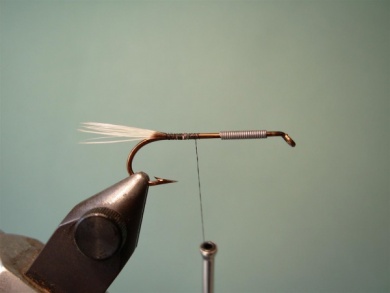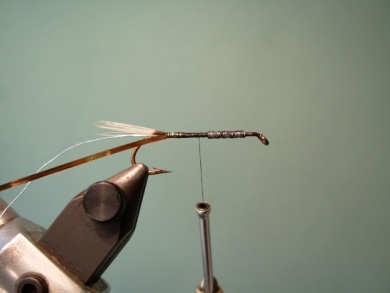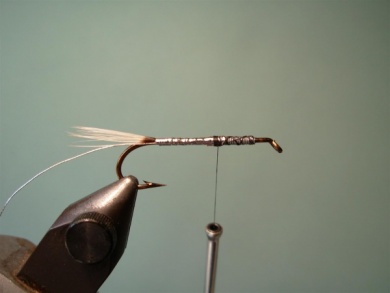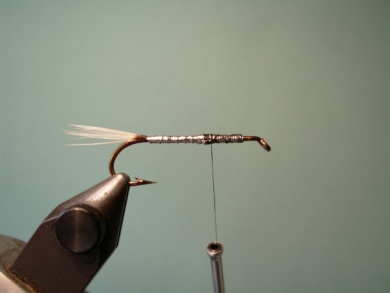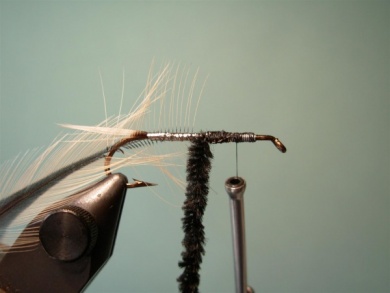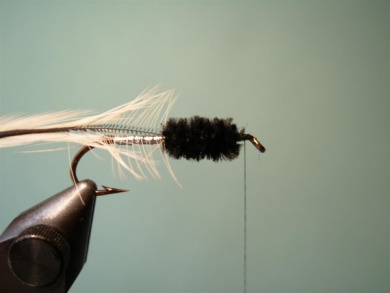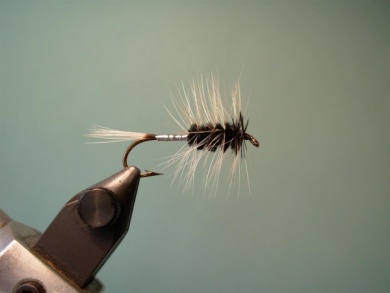Created in 1964 by Dan Nick Naranchi of Twin Bridges, Montana, this old design was named after one of the most famous rivers in the area, the Big Hole.
According to Joe Brooks, this fine fly looks something like a low-water wooly worm, and it brings lots of hits from big trout. It is fished acro View more...Created in 1964 by Dan Nick Naranchi of Twin Bridges, Montana, this old design was named after one of the most famous rivers in the area, the Big Hole.
According to Joe Brooks, this fine fly looks something like a low-water wooly worm, and it brings lots of hits from big trout. It is fished across current and allowed to drift free for several feet, and then a slow jerk is given to make it look alive and make it swim across the current in an enticing manner.
Dan Bailey made the fly very popular worldwide in its two versions, one with black and badger body, one with black and furnace body. Bebe Anchorena fished Montana the summer of 1965, and he took a couple of dozen Big Hole demons back to Argentina with him, and there he landed sea trout to 10 pounds.
Little used today, this fly has been a favorite of Argentine fishermen in the early '70s, a time when it was used in huge hooks up to size 2. I still remember a huge brown male about six kilos who took a friend in the Chimehuin river with one of these patterns.
It is straight forward to tie as it has only a tail of feather fibers (though in other catalogs the tail consists of two open ends of feathers in "V" shape), half shank of the hook is covered by oval tinsel (or flat with ribbing of oval), and the other half of the fly resembles a simple "Wooly Worm".
The most popular is the silver Big Hole demon, tied with "badger" feathers (cream base with black fibers), but we can use it in black, brown, olive or others with very good results. Regarding the size of the hook, most common sizes are # 4, 6 and 8, although for very light equipment smaller sizes work well.
Move the mouse over the image to zoom in the fly.
Touch the image to zoom in the fly.

List of materials
Hook: TMC 5263 or similar.
Thread: 6/0 black.
Weight (optional): lead wire.
Tail: tuft of badger colored feather fibers.
Abdomen: flat tinsel ribbed with oval tinsel (silver in both cases).
Thorax: black chenille.
Hackle: rooster saddle feather (badger).
Steps
Step 1
In case of a weighted fly, cover 40% of the hook shank with wire lead (next to the hook eye, since this will be under the chenille).
Step 2
Tie the feather fibers to make the tail of the fly.
Step 3
Tie the fine oval silver tinsel together with the flat silver tinsel.
Step 4
Wrap the flat silver tinsel along the shank of the hook up to the lead wire.
Step 5
Place the reverse ribbing using the oval tinsel.
Step 6
Tie a badger rooster feather by its tip, whence the ballast lead wire and at the same point tie the black chenille.
Step 7
Thread the chenille up to the hook eye.
Step 8
Palmer the rooster feather down to the hook eye, forming the head of the fly, cut the thread and cement.

